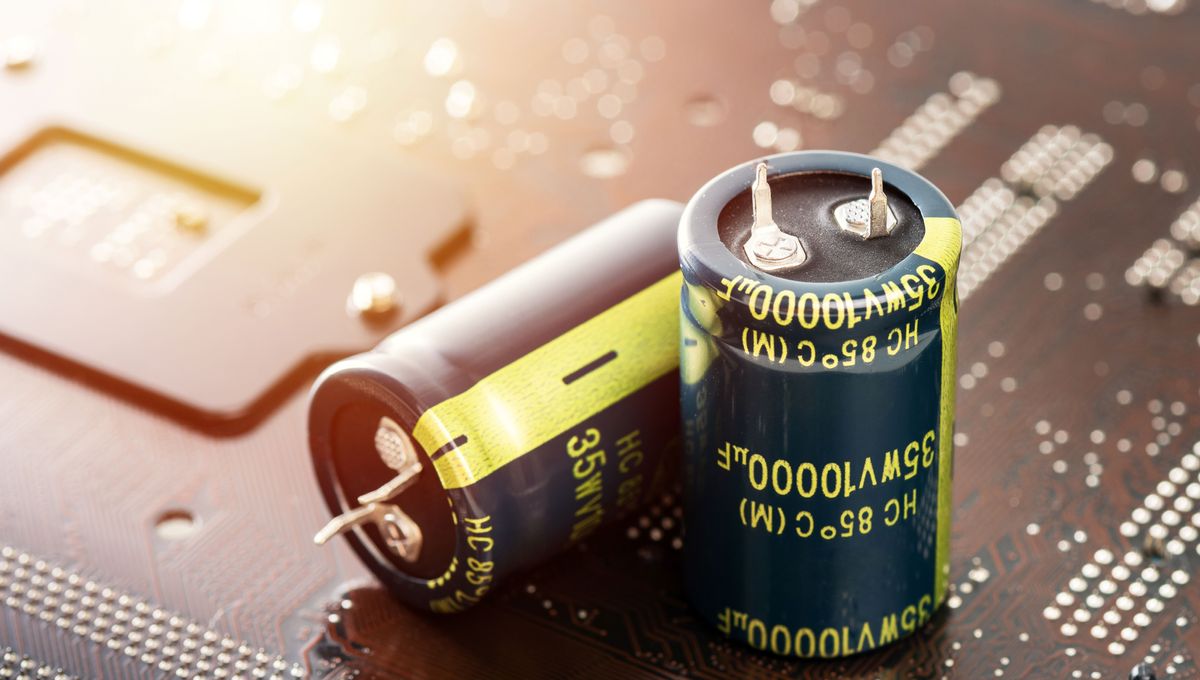
Two approaches to improving the amount of charge that capacitors can store look to be bearing fruit, based on simultaneous publications by unconnected teams. Each offers the potential to make supercapacitors more potent energy storage devices, and perhaps put them into the race for large-scale energy storage.
Supercapacitors have long had an advantage over batteries in their ability to release stored charge very quickly. However, even the best supercapacitors haven’t been able to hold enough charge to meet society’s biggest need. Occasional breakthroughs have made supercapacitors look like contenders for that market, but the dramatic fall in the price of lithium-ion batteries has left little room for competitors. That might be about to change.
Two papers published in the same edition of Science last month both explore big improvements in capacitance, although whether either can scale up remains to be seen.
All capacitors share the same basic principle. Positive and negative charges are separated and stored with a material in between to prevent anything leaping the gap. Closure of a switch allows the negative charges to flow around to meet the positive ones, creating electric current, with all its applications.
There are now hundreds of capacitors in a single laptop or smartphone. One look at a phone reveals how tiny they must be. As such, the charge they can store is orders of magnitude too low to drive a car, let alone power a city through the night.
Supercapacitors, as their name suggests, have much more capacitance. They’ve made regenerative braking possible, but even scaled-up-versions currently can’t compete with batteries for long-distance driving. For that to change, the capacitance needs to increase, which means finding materials that will cheaply prevent extremely large amounts of charge from recombining.
Ferroelectric materials like BaTiO3 are widely used in capacitors but suffer from a problem known as remnant polarization, where some charge remains behind rather than being released. Their crystals also deteriorate with use.
By sandwiching a 3D structure between 2D crystals, a team at Korean and American institutions reduced remnant polarization and report being able to store 191.7 joules per cubic centimeter of capacitor, and release it with more than 90 percent efficiency. Existing commercial counterparts store about 10 joules per cubic centimeter.
“We created a new structure based on the innovations we’ve already made in my lab involving 2D materials,” Dr Sang-Hoon Bae of Washington University in St Louis said in a statement. “Initially, we weren’t focused on energy storage, but during our exploration of material properties, we found a new physical phenomenon that we realized could be applied to energy storage, and that was both very interesting and potentially much more useful.”
Bae and co-authors’ report on the work only describes testing the capacitor over 10 cycles, indicating a long way to go before commercial application. “We’re not yet 100 percent optimal, but already we’re outperforming what other labs are doing,” Bae said. “Our next steps will be to make this material structure even better, so we can meet the need for ultrafast charging and discharging and very high energy densities in capacitors. We must be able to do that without losing storage capacity over repeated charges to see this material used broadly in large electronics, like electric vehicles, and other developing green technologies.”
In the same edition of Science, Cambridge University scientists describe results overturning ideas on how to make supercapacitors with carbon electrodes store more power. “Pore size has long been considered the main lever to improve capacitance,” They note. However, comparisons between commercial carbons with nanometer-scale pores found little correlation between size and capacitance. What does matter, nuclear magnetic resonance spectroscopy reveals, is the amount of structural disorder in the capacitors’ domains.
“More disordered carbons with smaller graphene-like domains show higher capacitances owing to the more efficient storage of ions in their nanopores,” the authors write. “We propose that for carbons with smaller domains, the charges are more localized, giving rise to stronger interactions between ions and carbon atoms, thus leading to more efficient storage of ions.”
The paper does not discuss how much capacitance can be achieved if carbon domains are made sufficiently disordered, although it runs against the grain to try to make electronic devices more disordered, rather than ordered.
Both papers are published in Science, Bae’s ferroelectric work here, and the disordered carbon work here.
Source Link: Supercapacitors Become More Super With 19 Times As Much Capacitance